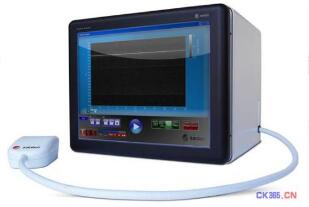Software-based image processing methods have some limitations, especially in terms of computational speed and algorithmic efficiency. So everyone naturally thought of FPGA as a platform for embedded image applications. Many of the image processing itself is parallel computing, and the programming hardware of the FPGA is essentially parallel. However, there are many difficulties in using FPGA hardware for image processing, and many skills need to be learned. Below I introduce two more basic image processing algorithm ideas.
The single image point operation is the simplest operation in image processing. The output value depends only on the input value. Regardless of the position, it can be regarded as a function mapping. From a hardware implementation point of view, the easiest way is to process each pixel of the input sequentially through a module that implements the function, that is, stream processing. Each pixel is processed separately, and the image can be divided into several parts. Each part is processed separately, so the point operations are easy to implement in parallel. Point operations serve as a bridge between reading images and subsequent processing. A: Brightness adjustment; To brighten the image, you can increase the output pixel value, which can be achieved by adding a constant. Similarly, dimming reduces the pixel value. But in practice, adjusting the brightness is much more complicated because the human visual system is nonlinear. B: Contrast adjustment; the contrast of the image is affected by the slope of the mapping function. The slope is greater than 1 enhancement, and less than 1 is decreased. It can be achieved by multiplying by a constant greater than or less than 1. C: Adjust brightness and contrast at the same time; a simple point operation to adjust them is: Q=aI+b=a(I+b'), a, b are arbitrary constants for controlling brightness and contrast. What if Q is out of range? For example, when 8 bits are used to represent the pixel value, Q exceeds 0~255. By default, only the 8-bit least significant bit is taken and any overflow bit that causes the value to go out of range is ignored. It is usually better to saturate or crop to extreme values.
Histogram operation. There are two related major steps in image processing using histograms. The first step is to create a histogram. The second step is to extract the data from the histogram and use it to process the image. A Set up a histogram: Accumulated counts for each pixel value. The number of occurrences of each pixel value is calculated by the counter array. The disadvantage of this method is that it occupies more hardware resources and is suitable for histogram calculation after the threshold. Dual-port memory can be used, which can greatly reduce the use of logic resources. B histogram equalization (using local information to assign pixels with input values ​​that have a large count value over the range of output pixel values ​​to obtain a flatter histogram): The map that implements histogram equalization is a normalized accumulation Histogram. Intuitively, if the count value of the set of input points is greater than the average, the slope of the map is greater than 1, and conversely, less than 1.
Local filter. The local filter extends the point of operation, taking the result of a function of the pixel value within a local window as the output. The size and shape of the window can be arbitrary, but it is generally an odd number of squares. The ones I have seen the most are 3x3, 5x5, and 7x7. In this case, the center is easy to determine. Local filters have denoising, edge detection, edge enhancement and so on. Linear denoising includes order denoising, mean denoising, weighted mean denoising, etc. Edge detection can use Prewitt, Sobel operator, etc. These algorithms are implemented in a 3x3 window, which is relatively easy. It is also possible to improve these algorithms, which is a good innovation for writing small papers. There are also some morphological filters, color filters, and the general idea is the same, that is, when the implementation of the algorithm to change it.

Disposable vapes are immensely popular and convenient e-cigarettes that come ready to vape out of the packaging and are disposed of once the device runs out of e-liquid or battery charge.
- Pre-filled with salt nicotine vape juice which tend to have higher doses of nicotine, providing a quicker and more satisfying nicotine buzz that's similar to smoking.
- Comes in a wide variety of flavors
- Draw-activated firing mechanism, ensuring ease of use
- Compact, lightweight and discrete on-the-go device
- Cost-efficient
- Low vapor production helps to avoid unwanted attention usually associated with large vape mods that have bigger cloud production
- Single use: no hassle of worrying about charging the device or refilling with e-juice
- Recyclable and Eco-friendly
- Similar to hitting a cigarette, which may be helpful for smokers to make a smooth transition to vaping
- Usually more intense flavor due to the more restricted airflow inherent in most disposable vape devices
Vape Pen Disposable E Cigarette,Disposable Vape Pen Stick,Disposable Vape Puff Bar,Electronic Cigarette Vape Puff Bar,Disposable Vape Device
Shenzhen Ousida Technology Co., Ltd , https://www.osdvape.com